Advancing Passenger Safety
Situated on 20 acres next to the Federal Aviation Administration site at the Atlantic City airport, the Transportation Security Laboratory (TSL) hosts the know-how and state-of-the-art scientific equipment needed to verify that the nation is safe during airline travel and visits to stadiums, other venues and government buildings.
Those seeking to do harm or prosper from for example, opioid distribution, illegal weapon trafficking and improvised explosive devices are at the forefront of what the TSL works daily to abate as it tests and evaluates the processes, equipment and software needed for the most effective ways to scan or find contraband hidden on a person or in luggage.
The Transportation Security Administration (TSA), the government entity under the Department of Homeland Security (DHS) responsible for improving the security of and safeguarding the U.S. transportation system and its passengers, needs the best technologies to confront a myriad of threats, and it relies on the TSL to test and evaluate those technologies and tools, explained Christopher Smith, director of the TSL.
In addition to working closely with the TSA, the TSL partners with other entities across the Homeland Security enterprise. “That is not just DHS, but everybody we work with, which could be the NFL who wants to make sure that their stadiums are safe,” Director Smith said. “That could be first responders who want to be able to detect hazardous substances or the residue of explosives.”
The TSL is positioning itself for the future and is investing $55 million into new facilities, with the Army Corps of Engineers managing the construction of the so-called Detection Sciences, Testing and Applied Research Center. The complex will support additional test and evaluation work, including opioid detection system performance testing. Smith indicated he hopes the groundbreaking for the facility will happen in 2025, with the goal to have the facilities built by 2029.
“One of our strategic goals is to create a robust laboratory infrastructure that supports fast and efficient verification and validation of screening technologies,” he stated. “We’ve had a master plan in place for a number of years to build several more laboratories, including a chemistry laboratory, a physics laboratory and some ancillary facilities associated with those. And it was just last year that we got the $55 million to do that.”
Meanwhile, the TSL, which is a part of DHS’s Science and Technology Directorate, has two test and evaluation divisions. The Developmental Test and Evaluation group provides certification, qualification tests and laboratory assessments of vendor equipment for the TSA and other DHS stakeholders. The group performs stringent testing and a critical review of a product’s ability to detect explosives. The director shared that companies may claim that their solutions can detect certain explosives, but after an exhaustive review, the TSL may find otherwise.
The Independent Test and Evaluation division conducts certification tests supporting the TSA’s acquisition of explosive detection systems for use in airports. The division also validates any changes the TSA needs to make to fielded systems and configurations due to advancing threats or new operating protocols. “The IT&E division, their customer is not the vendor,” Smith clarified. “Their customer is the TSA. They’re going to test that equipment and tell the TSA that that equipment either meets their requirements or does not meet their requirements.”
The TSL also has five labs on-site for explosives characterization, simulant chemistry, bulk detection of explosives, trace detection and electromagnetic effects, as well as eight blast-hardened test cells and other specialized explosive storage and handling areas designed for commercial, improvised and military-grade explosives. The TSL also provides a range of actual explosives to system manufacturers to develop the software necessary to locate the explosives within various concealment scenarios, according to the lab.
And while the TSL does perform applied research—at various technology readiness levels (TRLs)—it is not necessarily for the development of screening technology. Scientists work to characterize the signatures of various energetic materials to help the TSA set requirements for threat detection. They also assess the vulnerability of commercial aircraft to various types of explosives and examine blast mitigation countermeasures for the cargo bays and fuselage. The lab also conducts specialized training on explosives, threat detection, blast vulnerability and mitigation.
“There is no technology development,” Smith clarified. “But we need to do tests and evaluations smartly, and to do that you need to develop the methods. You need to develop materials and the processes that are going to allow you to do that testing as efficiently as possible. So, we will test at TRL level three, and we’ll test at TRL levels seven or eight.”
The TSL also performs some post-deployment testing and evaluation to make sure equipment already in use at the airports as part of the TSA’s explosive detection system and other efforts have not degraded “or that the circumstances of that operation or the stream of commerce hasn’t changed in a way which is resulting in misbehavior of that equipment,” Smith added.
The TSA holds the global gold standard of explosives screening and threat-based scanning, Smith ventured, and the TSL works to not only uphold this high standard but to raise it as the government considers new tools to mitigate the ever-changing threats.
As such, the TSL is bringing about a new wave of solutions, such as X-ray diffraction, differential phase contrast, artificial intelligence and machine learning, and open architecture, through its stringent test and evaluation processes.
“A lot of exciting advancements are going to happen in the relatively near future,” Smith promised.
The new solutions are meant for either checked-luggage scanning—the large MRI-sized X-ray scanners out of view of passengers that scan each bag—as well as individual passenger screening and carry-on luggage scanning.
Since checked baggage “remains an attractive target for threat actors to try to exploit,” according to a statement from TSA administrator Vice Adm. David Pekoske, USCG (Ret.), the new solutions have to find any possible hidden explosives, and at a tremendously high volume and pace. In 2019, before COVID-19, the TSA screened 1.4 million checked bags per day for explosive materials. They currently rely on computed tomography and ion mobility spectrometry.
X-ray diffraction and differential phase contrast offer TSA officials the ability to “see” better into suitcases through the identification of specific shapes by color of possible threats versus the current views of potential sides of the luggage. In addition, by streamlining and standardizing a framework for related equipment and technology, open architecture will enable the combination of multiple screening systems.
“Open architecture is going to bring in a lot of diversity of equipment into the airports,” Smith said. It will also support various TSA initiatives, such as the so-called One Stop Security effort to be used with trusted international partners and the On-Screen Alarm Resolution Protocol for use within the United States.
Most of all, it will “simplify the procurement process” for enhancements to the explosive detection systems and support the possibility for third-party advanced algorithm development. For open architecture to become a reality, the TSA must also bolster its cybersecurity requirements and information technology infrastructure, according to TSA Administrator Pekoske.
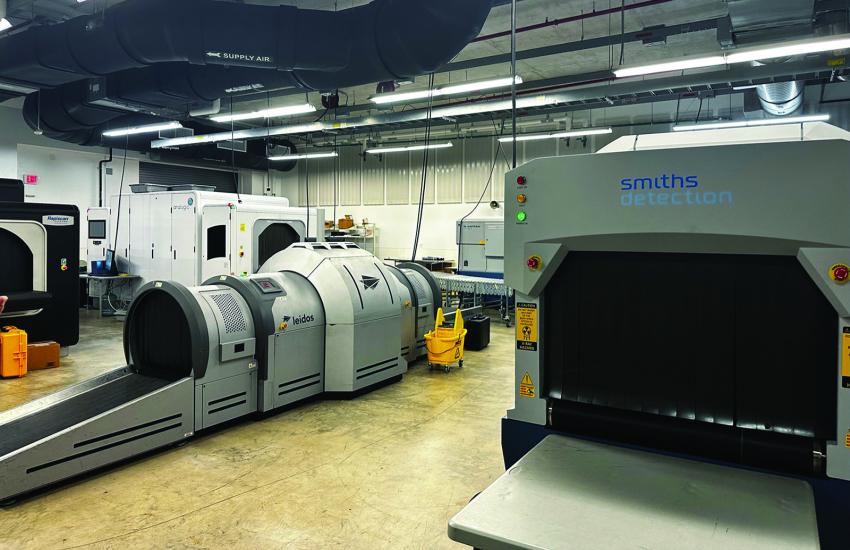
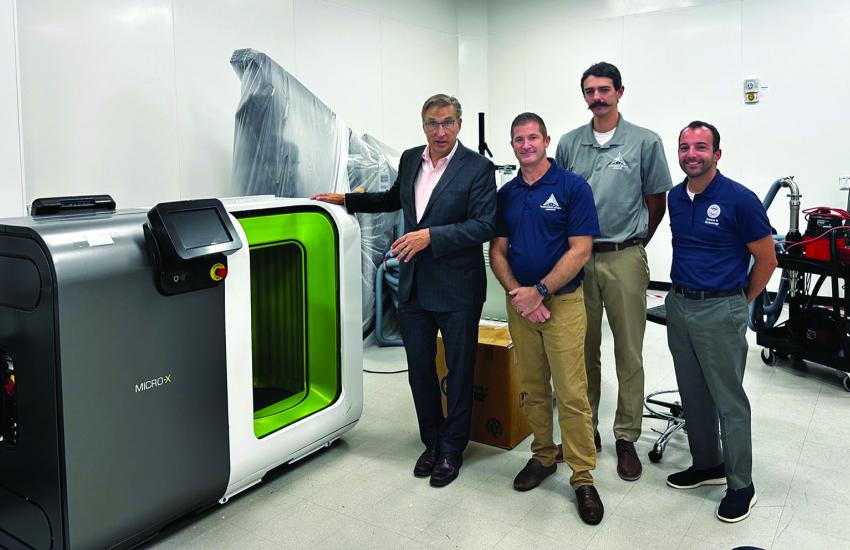

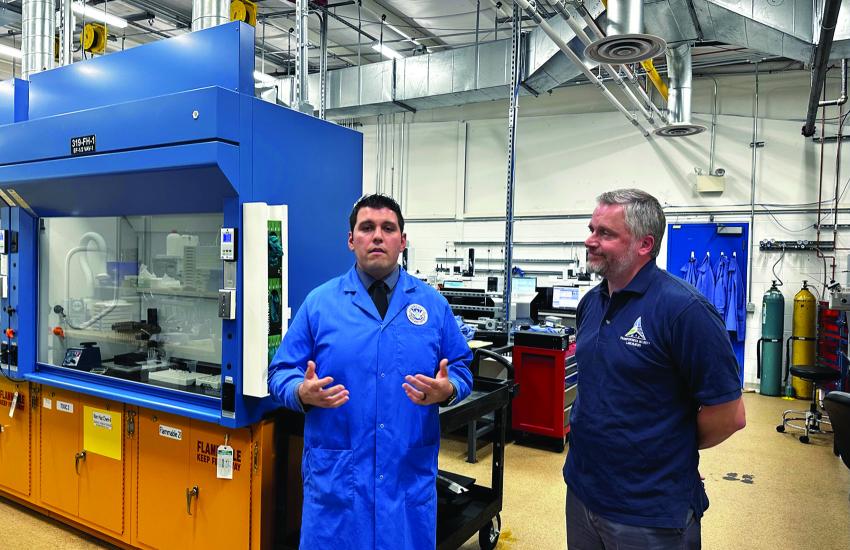
The TSL is examining how machine learning algorithms and other artificial intelligence tools could be used in conjunction with the foundational algorithms used for the baggage scanning process—as modern-day machine learning could bring additional optionality for TSA screeners.
“Machine learning requires a massive amount of data,” Smith said. “What we are looking at is synthetic data and actually creating data by understanding the physics of that sensing process and being able to create or modify data in a way that we can use to train or to test those algorithms. That is not an easy thing to do. That requires very smart people doing very sophisticated research and development work. That’s what they’re doing.”
And instead of doing its comprehensive testing and evaluation in sequence, the TSL is considering how it can conduct performance testing in parallel with the TSA. “What we thought we would do instead is actually bring those two lines of testing together because they can be done in parallel while we’re determining the ability of equipment to detect threats,” said Smith. “We’re also running it a lot and getting some feedback on the reliability and the maintainability of that system. The whole idea there is to expand the services we provide to TSA so that we can get that testing done in parallel and a lot faster.”
Moreover, the scientists at the TSL must always consider the passenger experience as they test and evaluate new solutions for inspecting travelers and their carry-on luggage.
The United States has 450 airports, with 45,000 airline flights and 2.9 million airline passengers a day—according to the Federal Aviation Administration. Scanning must be done quickly and be highly effective.
Presently, the airports rely on millimeter wave technologies that deflect off the skin to inspect for contraband on a person, since the X-ray technologies used for luggage cannot be used, as they could cause harm. The millimeter wave solutions are housed in phone-booth-shaped scanners, in which one person at a time is slowly scanned.
The advanced solutions that the TSL is evaluating present a faster, more mobile, walk-through experience. The TSL director even envisions a time in which passengers could walk through screening areas and not even notice. Passengers (outside of pre-check travelers) could keep their shoes on. People could walk through a scanner with their coats on or not have to pull laptops or other electronic devices out of their backpacks, for example, he said.
In the nearer term, the TSL scientists are working on technologies to support faster inspections and different levels of “pre-check” screening, Smith explained. “So, there’s some things that you’ll see in the future, like self-screening and risk-based screening. Adm. Pekoske is a fantastic administrator of TSA, and he’s got a vision for screening, which is not only effective but which is very convenient for the passengers, practically transparent, and also relatively low cost for the TSA.”
The New Jersey-based lab also has two satellite facilities, one in Florida at Tyndall Air Force Base called the Tyndall Reactive Materials Group and another in Huntsville, Alabama, at the Joint FBI-TSA-DHS Terrorist Explosive Device Analytical Center— Improvised Explosives Detection and Synthesis Center—that provides the TSL with the ability to quickly respond to emerging threats, the lab indicated.
Lastly, the TSL also responds to “very urgent requests to address an emerging threat,” Smith shared. And while he can’t speak about those kinds of events, he sees how the lab works adroitly with the TSA, the FBI and other partners to quickly identify and abate the risks.
“We are in good hands,” he said.

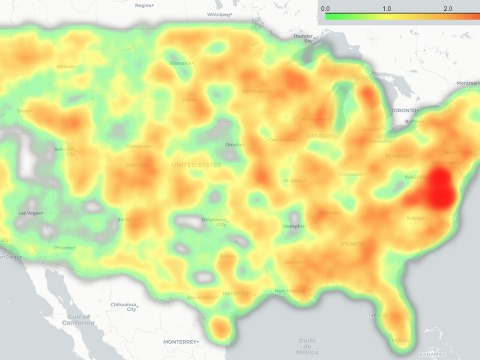

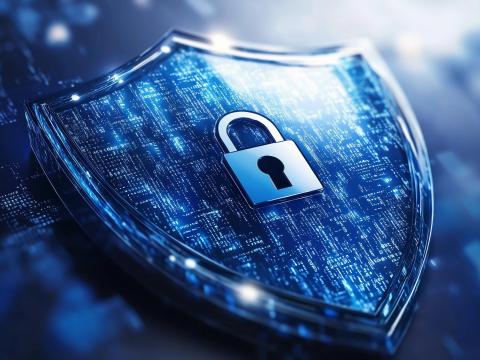
Comments